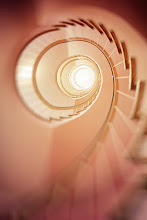The Pattern Tales - interview with Italian designer and art director Chiara Aliotta
Chiara Aliotta is an Italian designer and art director, co-founder of The Pattern Tales, a creative partnership dedicated to literature-inspired original digital print collections. Her husband, the artist Spiros Baras, and she are bibliophiles and they create limited-edition artworks to pay homage to the great writers and poets whose work has inspired them. We have conducted an interview with Chiara.
What is so unique about your process in the creation of your digital art?
The Pattern Tales artworks may be figurative and/or abstract but they all share a unique, key visual element: the use of pattern or the concept of repetition. All our artworks are based on or inspired by different books and we work with two different styles and approaches in mind. Through these narrative expedient, our artworks reflect the complex rhythm that only words on a page can imitate.
How do you create art of a high standard?
The high quality of our art is determined by three elements: the design, the materials we use and the limited number of impressions. The design is unique: each element is original and partially or entirely created on the computer.
The materials we use is another important aspect of our work as artists. We strictly use lightfast pigment-based inks and we invest a lot of our time seeking archival papers that are able to render all the details and colours of our artworks.
In terms of value, all our artworks are numbered (maximum 30 impressions of each artwork) and hand-signed by the artist. In 2017, we also launched a premium collection, the Special Editions, for more exigent customers. For this collection, artworks are available in only 5 prints and launched in a very specific period of the year.
Which are the most stringent criteria used to screen your art as your commitment to quality?
Knowledge and awareness. Using professional tools and archival materials is not enough without experience.
Spiros did intensive studies in digital art before we could finally gain confidence in producing high-quality original prints.
Experience taught us that if you want to ensure the longevity of a digital print, you need to check everything: the quality of the paper and the inks, but also the temperature and humidity of the environment.
For this reason, the printing process happens in our own studio and no third parties are involved.
Please tell us more about your work on book illustrations?
We have worked on several book illustrations before we decided to start our own project, The Pattern Tales.
For example, among other works, a few years ago Spiros has illustrated the graphic novel Rainworms written by Samuele Livornese available on Amazon, and the fictional novel, La Virgola written by Laura De Luca and published by La Vita Felice.
Illustrating books is a complex process for any artist because there are so many visual and information processing elements at play: reading a book may take us a few days, months or when it comes to big stories, even years!
It is a long process of discovering: for some stories, we may need to travel to look for more inspiration. Sometimes we need to visit places described in the book itself to grab a detail that we will later use in our artwork.
As a designer, I prefer sketching a little bit on paper and then move to Illustrator to refine the details and create the motif. Spiros has a different artistic approach. He incorporates drawings and watercolours by scanning and layering them to create the final artwork on the computer.
Both techniques are challenging when you aim to create an immersive experience close to the one offered by the book.
How did The Pattern Tales begin?
We both love beautifully illustrated books and reading, and we wanted to create a deeper emotional connection and resonance between our artworks, the book characters and stories that live in our minds as readers. This unique relationship between reader and inner self-storyteller is what we wanted to keep alive, long after the book finds its place back on the shelf.













Leave a Comment